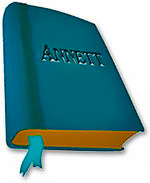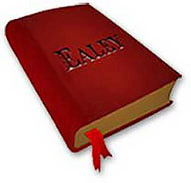![The reverse of the portrait of [we think] John Matthews W. Melville. Pinxit. 1845.](Images/reverse_of_john_matthews_portrait.jpg)
ON the reverse of the portrait of the gentleman who might be John Matthews is the artist's declaration: "W. Melville/ Pinxit/ 1845."
![The reverse of the portrait of [we think] Jane Sperrin Simla](Images/simla.gif) On
the reverse of the
portrait of the lady who might be Jane Sperrin
is the additional word, "Simla".
On
the reverse of the
portrait of the lady who might be Jane Sperrin
is the additional word, "Simla".
W Melville painted this in Simla in 1845.
Three solid facts. Who, where, when.
Now look behind the lettering, at the background pattern of dark and light. It isn't random. A pale, streaked, ghostly sitter seems about to lever themselves up from their chair.
A work blocked out and abandoned, perhaps? The board flipped over and re-used?
What it has become, after 17 decades, is an unwitting self portrait. That handful of bright facts scattering into the murky hint of a form beyond.
W Melville. Painted. Simla. 1845.
An entry for "William Melville", Artist, forty-five, who died on the 6th February and was buried in Circular Road Cemetery on the 7th February.
• William Melville at the Art UK site :
Images of three works by William Melville—two landscapes, both titled 'Scene on the Ganges', one portrait, 'An Officer of the East India Company Rifle Regiment'. The hands of the Officer of the East India Company Rifle Regiment have the same cartoonish appearance as the hands of our gentleman and lady. The medium, as with our portraits, is oil on board. The dimensions of the board, 20.4 x 15.2 centimeters, are a fit. The date is 1846.
• Another 'William Melville' page from the same site :
Images of a further three portraits by William Melville, this time oils on canvas. The first is of Lieutenant George Richard Talbot of the 8th Bengal Native Infantry, painted about 1835; the second of Colonel James Skinner, CB, of the 1st Regiment of Local Horse, painted about 1836 (copy of an original by Melville); the third of General John Withington Adams of the Bengal Army, painted about 1837. These portraits are more detailed than ours, but then they are larger and on canvas rather than board.
• Government Art Collection :
A potted biography about the painter of the Scenes on the Ganges, stating that he was a merchant who arrived in India in 1814, worked for Fergusson and Company in Calcutta between 1824 and 1832, then travelled up country and "perhaps lived by painting". There is mention of several portraits painted in the 1830s and 1840s, in Sardhana, Allahabad and Simla, including one of Begam Samru, later purchased for Government House, Allahabad.
• India Office Select Materials (no longer accessible) :
Another potted biography, including many of the same details, and citing its source as British Artists in India, 1760-1820 by W. Foster. Paintings listed include the portrait of General John Withington Adams mentioned above, a lithograph by Colesworthy Grant based on a portrait by Melville (dated 1838-1850), a portrait of Loveday Marian Murray (Simla 1842, oil on card), and a portrait of Mrs Murray's husband, Dr. John Murray (Simla 1842, oil on card).
• 'Raja Jivan Ram: A Professional Indian Portrait Painter of the Early Nineteenth Century' by J.P. Losty :
An article about a rival portrait painter, with a few incidental biographical details about Melville. His portrait of Begam Samru, for example, was one of many intended to decorate the reception rooms of her new palace at Sardhana, built in 1834. Melville's portrait was given the place of honour in the principal room.
• Invaluable.com, Antiques, Fine Art & Collector's Items :
An image of an oil on canvas, very similar in style to our portraits, of a lady in black, dated 1848. Signed by Melville.
• National Army Museum :
Another image of Colonel James Skinner's portrait, the National Army Museum being its home.
'W' was likely William, then. Not Walter, or Wilfred, or Winston. If he is the William of the burial entry, he was aged about forty when he painted our couple in Simla, probably during the summer months. He had been (or was going to be) in the Bihar region, capturing neat, tranquil tableaux of the Ganges. And he brought with him at least a decade's experience as a portraitist, often painting military figures. He was based in Delhi and Simla, perhaps following his customers as they moved between winter and summer quarters. But, if he's the same William who was buried in 1850, he would return to Calcutta at the end of his life.
That burial entry is a problem, though, because it gives a birth year of about 1804, making the artist a mere ten years old in 1814, when he supposedly landed in India as a merchant. Were there two concurrent William Melvilles painting in India? Is the age on the burial entry incorrect? Has the Department of Culture got its dates wrong?
This ghost, I think, is going to need more than Google to build some flesh back on their bones.
Potential Resources
for Finding Out More
- 'British Artists in India, 1760-1820', The Walpole Society, XIX (1930-1), by W. Foster.
- 'Begam Samru', Bengal Past and Present, Volume 30 (Oct-Dec 1925), by W. Foster.
- From Merchants to Emperors: British Artists in India, 1757-1930, by Pratapaditya Pal & Vidya Dehejia (1986), Ithaca: London
- India Observed: India as Viewed by British Artists, 1760-1860, by M. Archer & R. Lightbrown (1982), V&A Publications: London *
- The Sardhana Pictures at Government House, Allahabad, by Sir Evan Cotton.
- Notes, correspondence and illustrations in connection with British painters in India, especially William Melville and George Beechey. Held by the British Library: Asian and African Studies.

